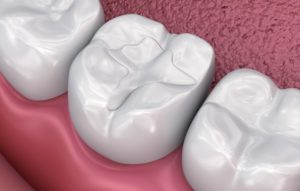
Did you know that dentistry is one of the oldest medical professions? That means that it has had plenty of time to evolve and discover the best techniques for treating dental problems, including cavities. The history of dental fillings is complex, but the practice has evolved enough that modern fillings are painless and blend in with your smile. Let’s take a closer look at the history of fillings.
In the Beginning
Researchers found the remains of a man in a cave in Italy with beeswax in his teeth. These remains are about 6000 years old and are believed to be among the first forms of dental fillings. The first evidence of using gold comes from around 200 A.D. with the ancient Etruscans, who used it for crowns as well as fillings. The ancient Chinese were the first to be documented using amalgam fillings about 500 years later.
Amalgam Fillings
Amalgam is a blend of metals, including silver and even trace amounts of mercury, which has caused controversy over the years. Although it has been and continues to be used to fill about 75 percent of cavities, some patients do not wish to risk getting mercury poisoning. Even though the level of mercury in amalgam fillings is less than the average person is exposed to every day, the worry is understandable, especially if you are pregnant or work in a place where you are exposed to more mercury than the average person. Fortunately, these days many dentists offer porcelain or composite fillings, which are mercury-free and can be color-matched to seamlessly blend in with the rest of your smile.
Tooth-Colored Fillings and Their Benefits
Although most dentists offer you the choice between gold, amalgam, or tooth-colored fillings to treat a cavity, many patients prefer the latter for several reasons, including:
- More conservative option. When metal in amalgam is heated, it expands. When it cools, it contracts. This can hurt the structure of the tooth in the long run. In addition, sometimes part of the tooth needs to be worn away in order to make room for a metal filling. Tooth-colored fillings preserve more of the structure.
- Chemically bonded to the tooth. Composite fillings are more securely attached to the tooth. Minimal preparation is needed, so the procedure can be completed more quickly.
- Quicker recovery time. Your dentist will harden the composite material with a special light, as opposed to waiting a longer period of time for the metal in amalgam to harden. This means you can eat much sooner after your appointment is over.
- More natural appearance. As the name implies, tooth-colored fillings blend into the rest of your grin. Most people won’t even be able to tell that you got dental work done.
Dentistry is a complex and ever-evolving science. Who knows how fillings will evolve even more in the future to benefit you?
About the Author
Dr. Willy Kassem earned his dental degree from Temple University in 2007. Thanks to his dedication to using only the most state-of-the-art dental materials, Dr. Kassem has been named one of America’s top dentists several years in a row. He uses composite resin to beautifully and naturally fill cavities. If you think you need a filling, contact Dr. Kassem at (856)-818-9998.




